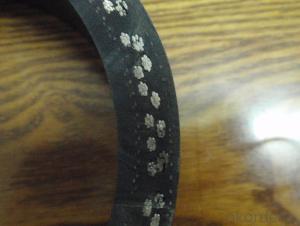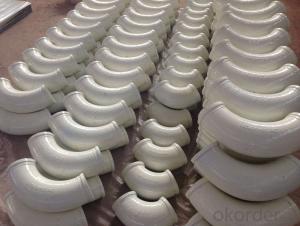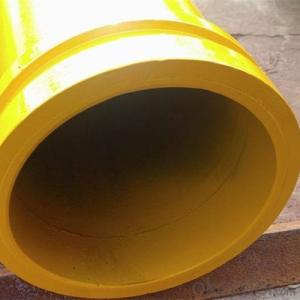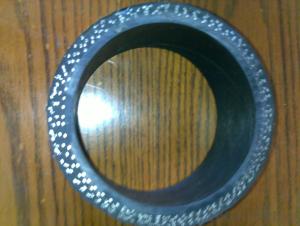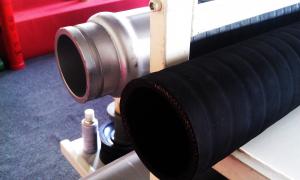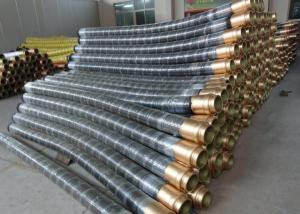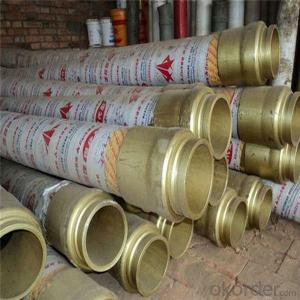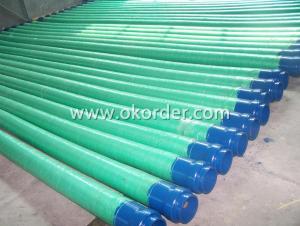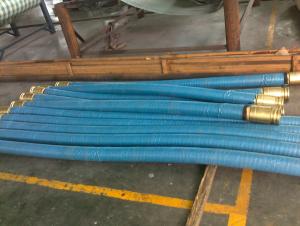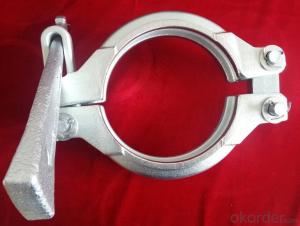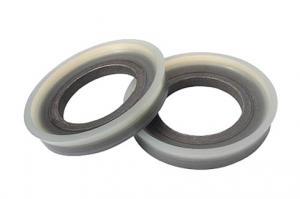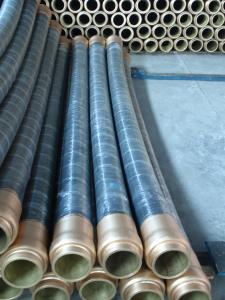Rubber End Hose of concrete pump parts --Reinforced with 2 steel layers
- Loading Port:
- China Main Port
- Payment Terms:
- TT OR LC
- Min Order Qty:
- -
- Supply Capability:
- -
OKorder Service Pledge
OKorder Financial Service
You Might Also Like

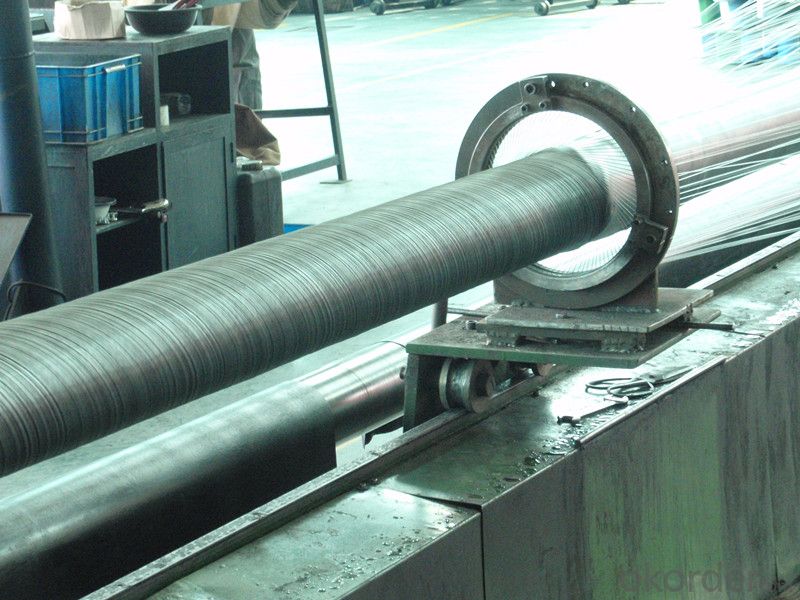
RUBBER END HOSE
1,2 layer wire steel
2,85 bar working-pressure
Length-------our normal 1-9 or according to client's requirment.
Packaging-----according to client‘s requirment.
Relevant Information:
Name | Concrete rubber hose; Delivery hose; End hose; Concrete pump hose; Boom hose |
Size | 2"/2.5"/3"/3.5"/4"/4.5"/5"/6"or according to client’s requirement |
Length | 3M,6M or Any length |
Reinforcement | Steel wire, tire cord or fabric |
Work Pressure | 85 to 1250(BAR/PSI) |
Burst Pressure | 200 to 2940(BAR/PSI) |
Service Life | 20,000 cubic meter |
Hose End | Galvanized, inner wall harden |
Application | Schwing, Putzmeister, Sany, Zoomlion, etc |
- Q: What kind of concrete pump truck?
- The advantage is that the occupation of the site is relatively small. Relatively low cost. But the labor intensity of the workers is relatively large. The advantage is that the operation cost is low. If the high-pressure pipe operation is used. The conveying height is relatively high
- Q: Are there any specific guidelines for the selection and installation of hydraulic components in concrete pump spare parts?
- Concrete pump spare parts have specific guidelines for the selection and installation of hydraulic components. When choosing these components, it is important to consider factors like the maximum operating pressure, flow rate, and compatibility with the existing hydraulic system. First and foremost, it is crucial to ensure that the selected hydraulic components can handle the maximum operating pressure of the concrete pump. This includes components such as hydraulic cylinders, valves, and pumps. To ensure their durability and longevity, it is advisable to choose components with a higher pressure rating than that of the concrete pump's operating pressure. Additionally, the flow rate of the hydraulic components must match the requirements of the concrete pump system. Hydraulic pumps and valves need to provide sufficient flow to effectively operate the concrete pump. Factors such as the size of the concrete pump, desired output capacity, and specific pumping requirements should be taken into consideration. Furthermore, compatibility with the existing hydraulic system is vital for the smooth operation of the concrete pump. It is important to select hydraulic components that are compatible with the system in terms of fittings, connections, and overall design. Seeking guidance from the manufacturer's guidelines or professional advice is recommended when selecting and installing hydraulic components in concrete pump spare parts. Moreover, proper installation is essential to ensure optimal performance and safety of the hydraulic components. Following the manufacturer's installation instructions and guidelines is highly recommended. The installation process should include proper alignment, secure mounting, and appropriate sealing of the components to prevent any leaks or failures. In conclusion, there are specific guidelines for selecting and installing hydraulic components in concrete pump spare parts. Considering factors like maximum operating pressure, flow rate, compatibility, and following proper installation procedures can help ensure the efficient and safe operation of the concrete pump system.
- Q: What are the layout requirements of concrete pump for building engineering?
- When more than one concrete pump or pump truck is pouring at the same time, the selected location should be the closest to each other. It is better to pour the concrete at the same time, so as to avoid retaining the construction joint.
- Q: What are the signs of a damaged concrete pump accumulator?
- Some signs of a damaged concrete pump accumulator may include leaks or fluid seepage, reduced pump performance, irregular pressure readings, increased noise or vibration, and sudden pump shutdowns or malfunctions.
- Q: What are the signs of a malfunctioning concrete pump control valve?
- There are several signs that can indicate a malfunctioning concrete pump control valve. Some of the most common signs include: 1. Inconsistent or uneven flow of concrete: A malfunctioning control valve can result in irregular flow of concrete, causing it to be unevenly distributed or even stopping the flow altogether. 2. Pressure fluctuations: If the control valve is not working properly, it can lead to fluctuations in the pressure of the concrete pump. This can cause inconsistent output and potentially damage the pump or other components. 3. Increased noise levels: A malfunctioning control valve may produce unusual or excessive noise during operation. This can be an indication of internal issues or improper functioning of the valve. 4. Leakage or dripping: Another sign of a malfunctioning control valve is the presence of leaks or drips around the valve or its connections. This can indicate seal failure or other problems that need to be addressed. 5. Difficulty in controlling the pump: When the control valve is not functioning correctly, it can become difficult to control the pump's operations. This can include issues with starting or stopping the pump, as well as controlling the speed and direction of the concrete flow. 6. Increased energy consumption: A malfunctioning control valve may result in increased energy consumption as the pump works harder to compensate for the valve's inefficiencies. This can lead to higher operating costs and decreased overall efficiency. If any of these signs are observed, it is important to address the issue promptly. Malfunctioning control valves can lead to costly repairs, downtime, and potential safety hazards. It is recommended to consult a professional technician or service provider to diagnose and resolve the problem.
- Q: What are the types, classifications and specifications of concrete pump?
- In accordance with the export pressure rating label, divided into low pressure pump (5MPa), medium pressure and high pressure pump pump (6-10MPs) (>10MPa)
- Q: What are the preventive measures for concrete pump?
- Pumping concrete should meet the requirements of pumping, and if necessary, test pump to determine the pump concrete mix ratio.
- Q: What is the washing process of the concrete pump pipe?
- Open the first section of the reducing pipe and the discharge gate, and thoroughly remove the remaining concrete in the hopper, the distributing valve box and the reducing pipe.
- Q: How often should concrete pump remote control antennas be inspected and replaced?
- To ensure optimal functionality, it is necessary to regularly inspect the antennas of the concrete pump remote control. The frequency of these inspections will vary depending on the usage and working conditions of the pump. In general, it is advisable to conduct inspections at least once a year or after every 500 hours of usage, whichever occurs first. However, if the pump is subjected to harsh environments or experiences frequent wear and tear, more frequent inspections may be required. It is crucial to carefully examine the antennas for any indications of damage, such as cracks, corrosion, or loose connections. If any damage is detected, immediate replacement of the antenna is essential to prevent disruptions in the remote control signal. By conducting regular inspections and promptly replacing antennas when necessary, the concrete pump can operate smoothly and efficiently.
- Q: How long does it take to receive concrete pump spare parts after placing an order?
- The time it takes to receive concrete pump spare parts after placing an order can vary depending on several factors. Firstly, it depends on the availability of the specific spare parts you have ordered. If the parts are readily available in stock, the delivery time can be relatively quick. However, if the parts are not in stock and need to be manufactured or sourced, it may take longer to receive them. Secondly, the location and distance between the supplier and your location also play a role in the delivery time. If the supplier is in close proximity, the parts can be delivered within a few days. However, if the supplier is located far away or in a different country, it may take longer due to shipping and customs processes. Furthermore, the shipping method you choose can also impact the delivery time. Expedited shipping options can ensure quicker delivery, but at an additional cost. Standard shipping methods may take longer but are usually more cost-effective. Lastly, the efficiency and responsiveness of the supplier also come into play. A reliable supplier with a streamlined ordering and shipping process will likely be able to deliver the spare parts in a shorter time frame. In conclusion, the time it takes to receive concrete pump spare parts after placing an order can vary based on factors such as availability, location, shipping method, and supplier efficiency. It is advisable to inquire about estimated delivery times when placing the order to have a better understanding of when the parts will be delivered.
Send your message to us
Rubber End Hose of concrete pump parts --Reinforced with 2 steel layers
- Loading Port:
- China Main Port
- Payment Terms:
- TT OR LC
- Min Order Qty:
- -
- Supply Capability:
- -
OKorder Service Pledge
OKorder Financial Service
Similar products
Hot products
Hot Searches
Related keywords
